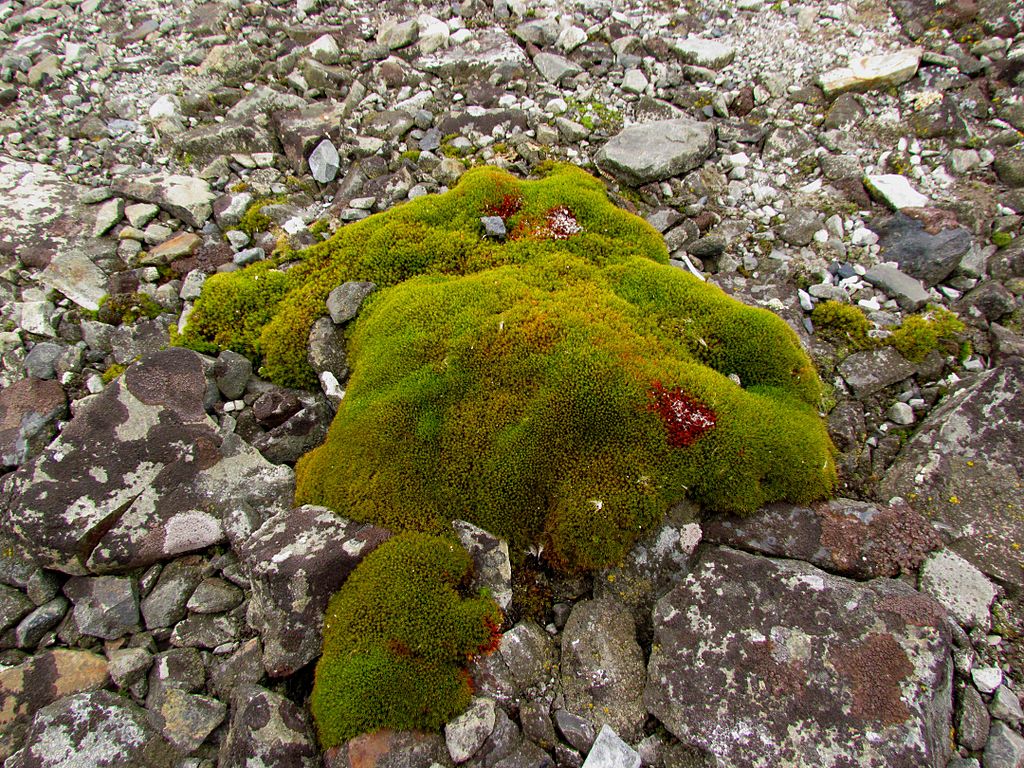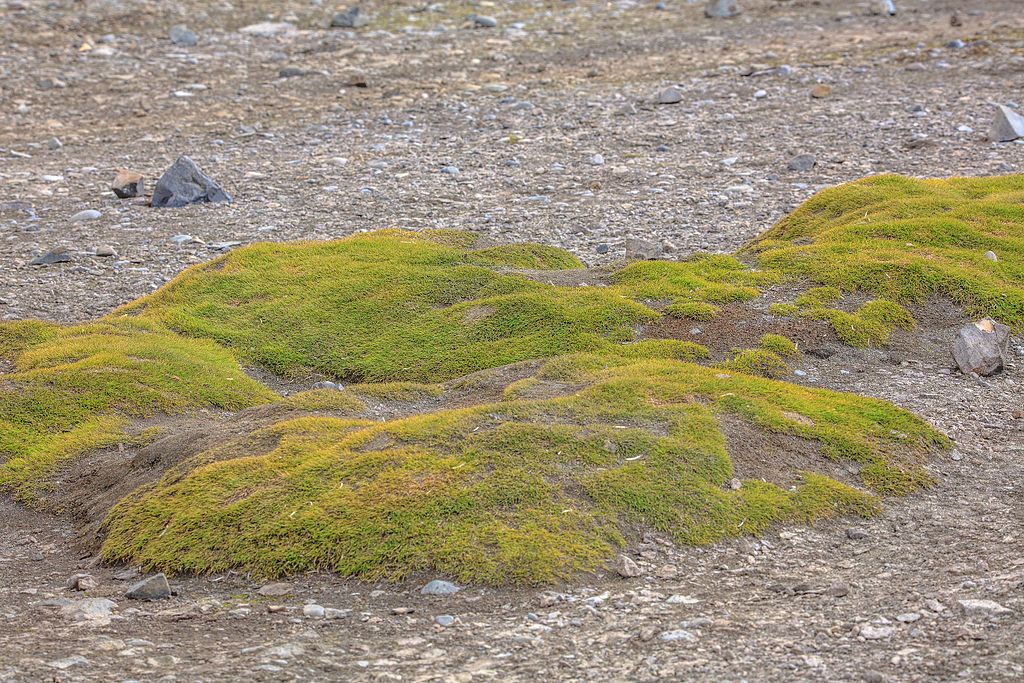Moss
Moss is one of the few forms of plant life occurring naturally in Westarctica. It is a small flowerless plant that typically grows in dense green clumps or mats. The individual plants are usually composed of simple leaves that are generally only one cell thick, attached to a stem that may be branched or unbranched and has only a limited role in conducting water and nutrients. Although some species have conducting tissues, these are generally poorly developed and structurally different from similar tissue found in vascular plants. Mosses do not have seeds and after fertilization develop sporophytes with unbranched stalks topped with single capsules containing spores.
Prevalence
About 100 species of moss have been recorded in Antarctica.
Like lichen, mosses can be found in almost all areas capable of supporting plant life in Westarctica, though they most often occur in areas with exposed rock.
Biology
Adaptation to polar environment
Westarctica's mosses exhibit a number of unique adaptations to help them survive in the harsh Antarctic environment. Many of the mosses have tightly packed stems and shoots to minimize water loss. Some mosses have orange carotenoid pigments which may help prevent photosystem damage during the growing season. Snow cover is important in protecting plants from wind, windblown ice and sand particles and extremes of temperature. If the protective cover of snow is removed then photoinhibition can occur, dramatically decreasing growth rates.
Reproduction
The dominant stage in the life cycle of mosses is the sexually reproducing gametophyte plant stage. However due to the extreme environmental conditions under which these plants exist, most reproduction occurs asexually from a deciduous shoot apex or other specialized asexual reproductive structures, called gemmae. Sexual reproductive structures may be present on the gametophyte, although male and female organs are rarely found on the same plant. In many cases the sporophyte stage, produced after sexual reproduction, is completely absent among Antarctic mosses.
This is more often true for the mosses of the Continental Antarctic, where only about 25% of moss species produce a sporophyte stage.
Impact of Climate Change
The impact of climate change is a major research topic of interest in the Antarctic terrestrial ecosystems, particularly the impact on moss. Temperature, ultraviolet exposure, water availability and exposure to wind are key factors that are changing in various ways in different locations.
Mosses are also quite sensitive to atmospheric pollution from distant sources. Traces of DDT and other chemicals have been detected in Antarctic mosses.

